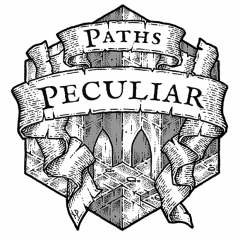In “The Return of the King”, J.R.R. Tolkien wrote:
“Arise, arise, Riders of Théoden!
Fell deeds awake: fire and slaughter!
Spear shall be shaken, shield be splintered,
a sword-day, a red day, ere the sun rises!
Ride now, ride now! Ride to Gondor!“
It is a mighty rallying call, but did you know it is (probably) inspired by the old norse Vǫluspá (Prophecy of the Seeress)? In verse 45, the Vǫluspá states:
“Brothers shall fight | and fell each other,
And sisters’ sons | shall kinship stain;
Hard is it on earth, | with mighty whoredom;
Axe-time, sword-time, | shields are sundered,
Wind-time, wolf-time, | ere the world falls;
Nor ever shall men | each other spare.”
The verse describes how the world plunges into chaos before the great end of everything – the apocalyptic Ragnarök.
I’ve always loved norse mythology, as well as the work of J.R.R. Tolkien and I wanted to pay tribute by illustrating this part of the poetic Edda. The text reads Skeggǫld, skálmǫld, skildir ro klofnir, which translates roughly to the iconic: “An axe-day, a sword day, shields are splintered”.



I think there’s no doubt that Tolkien would have had the verse in mind. Significantly, his version (though not a direct translation) is closer to the form of the original in retaining the alliteration – though the “wind-time, wolf-time… World falls”is noble.